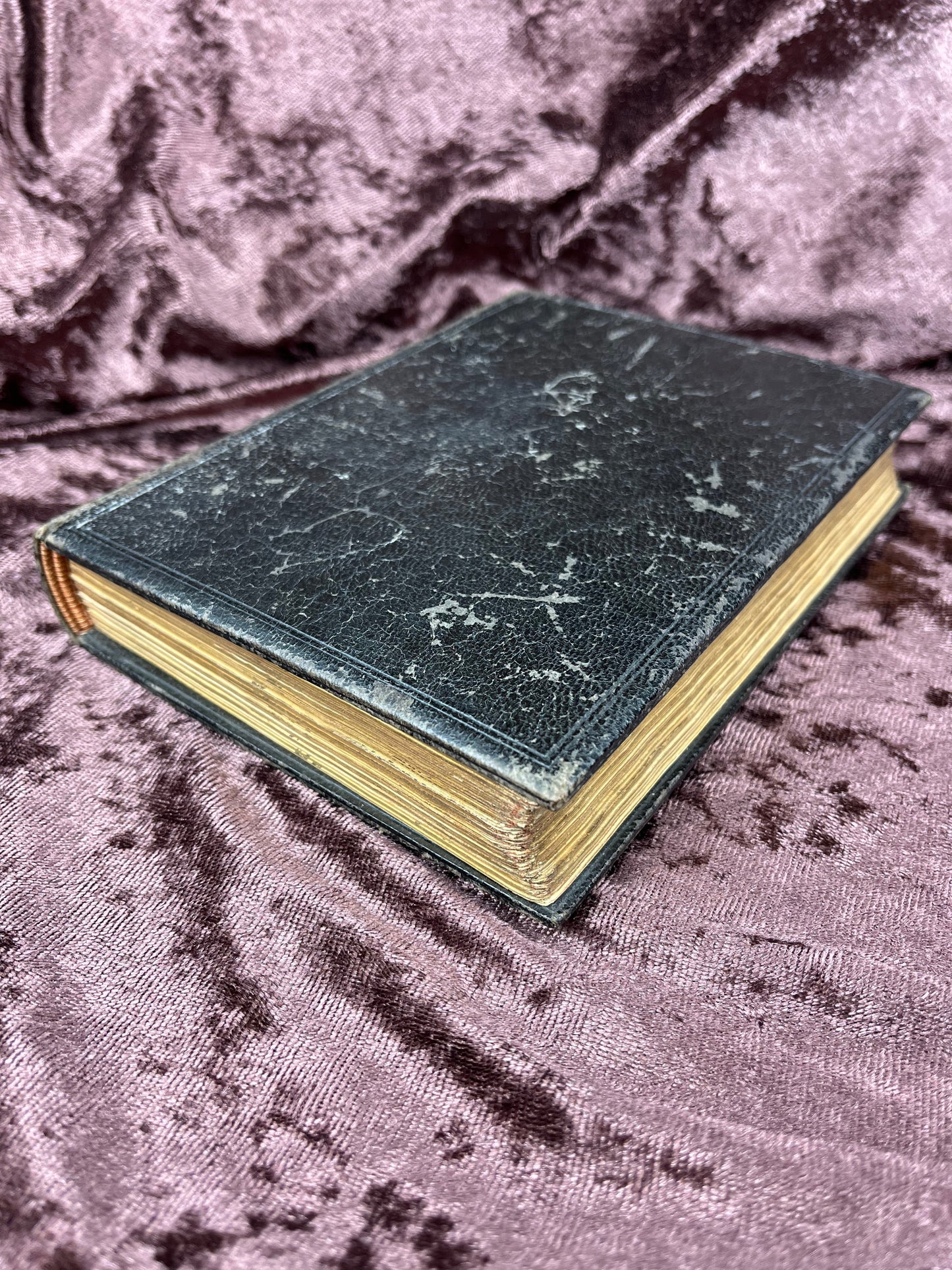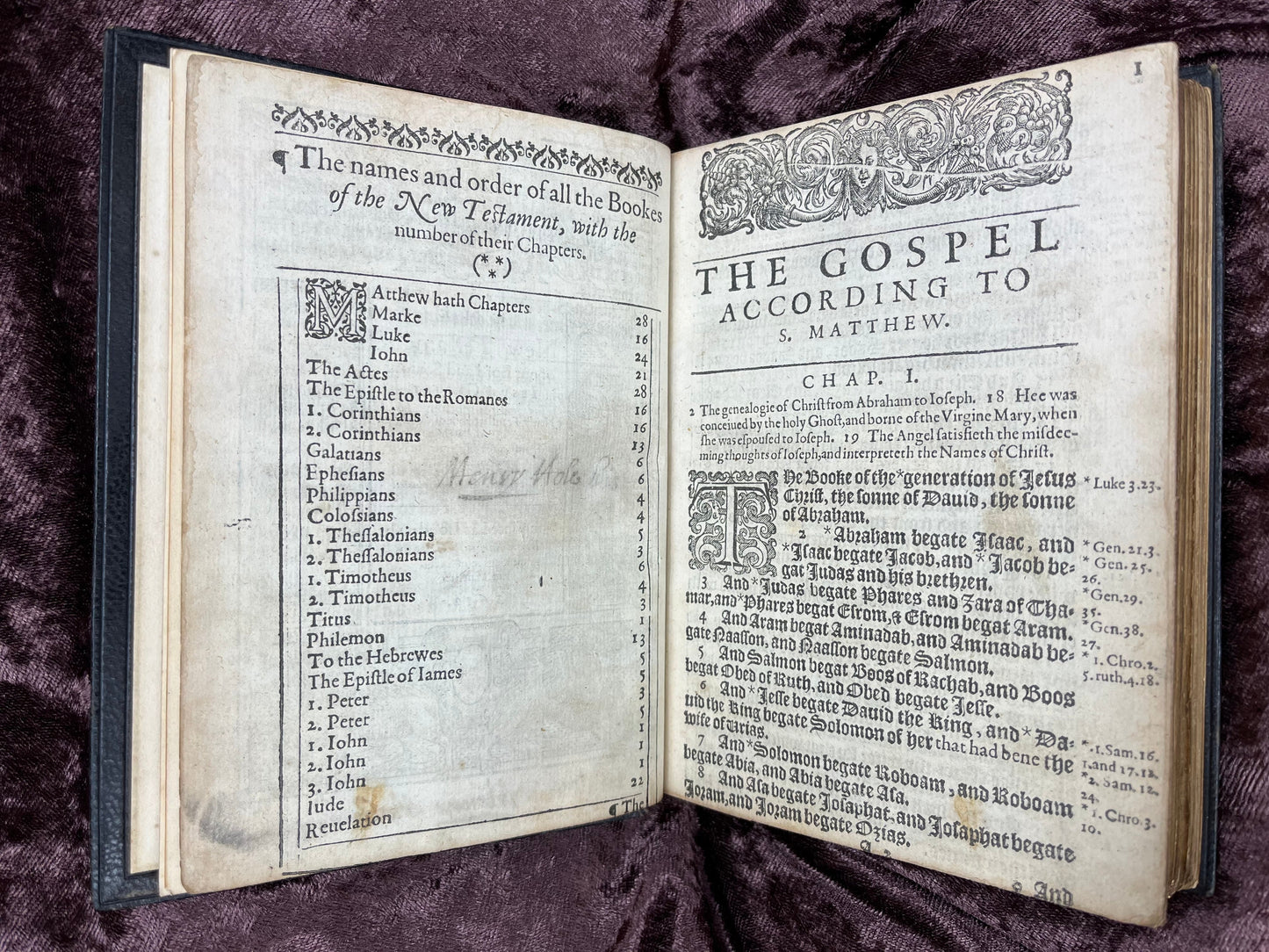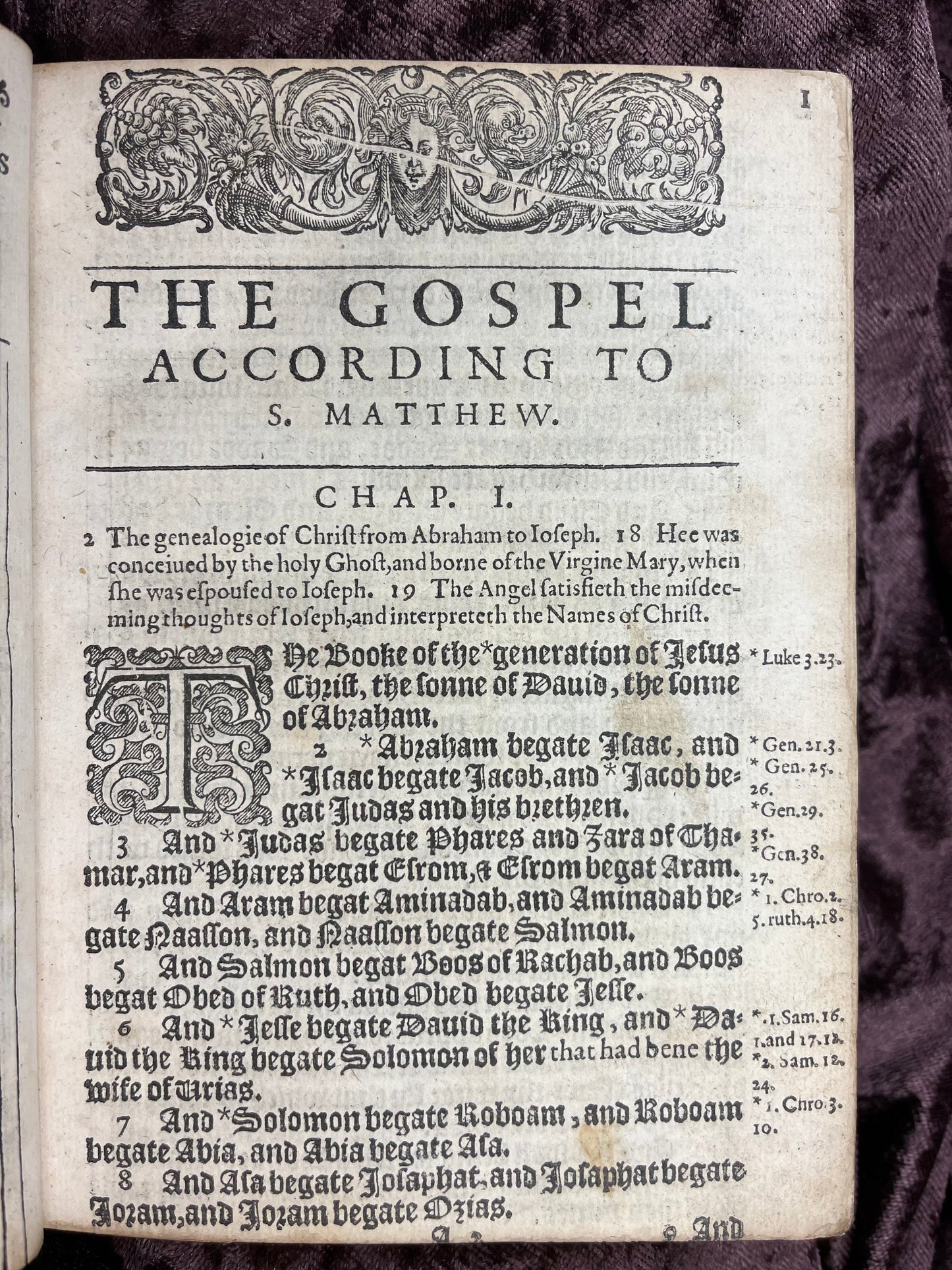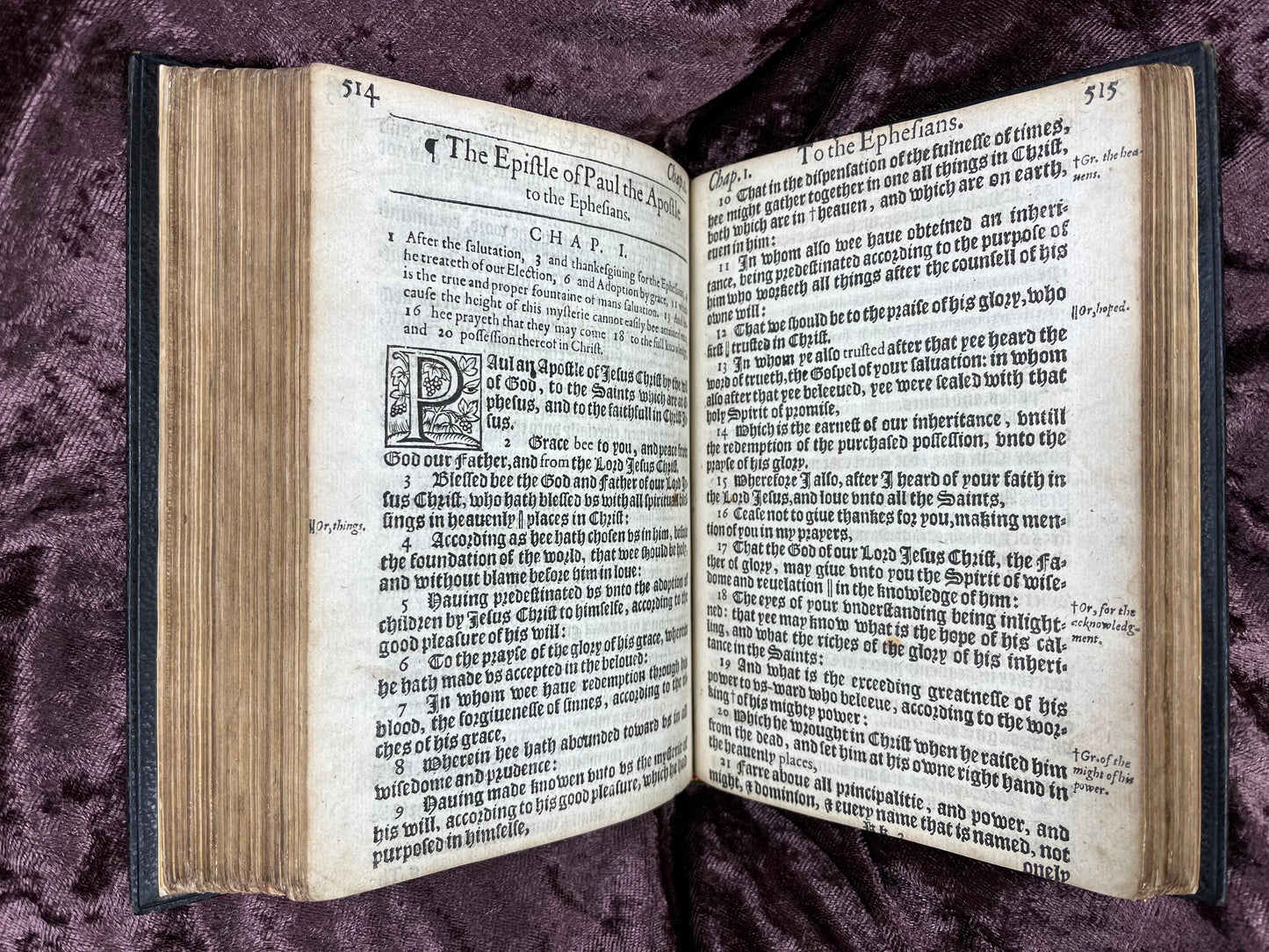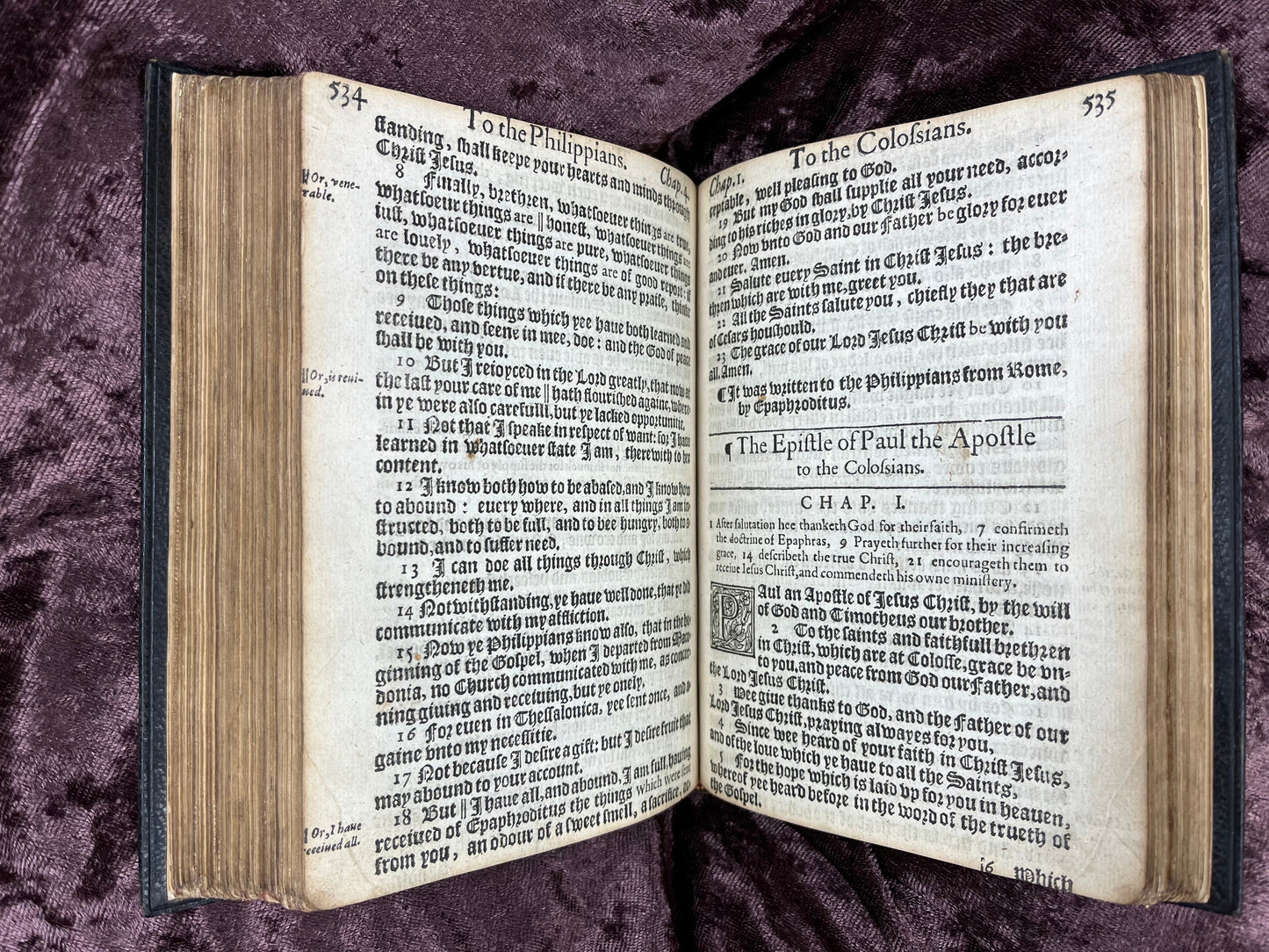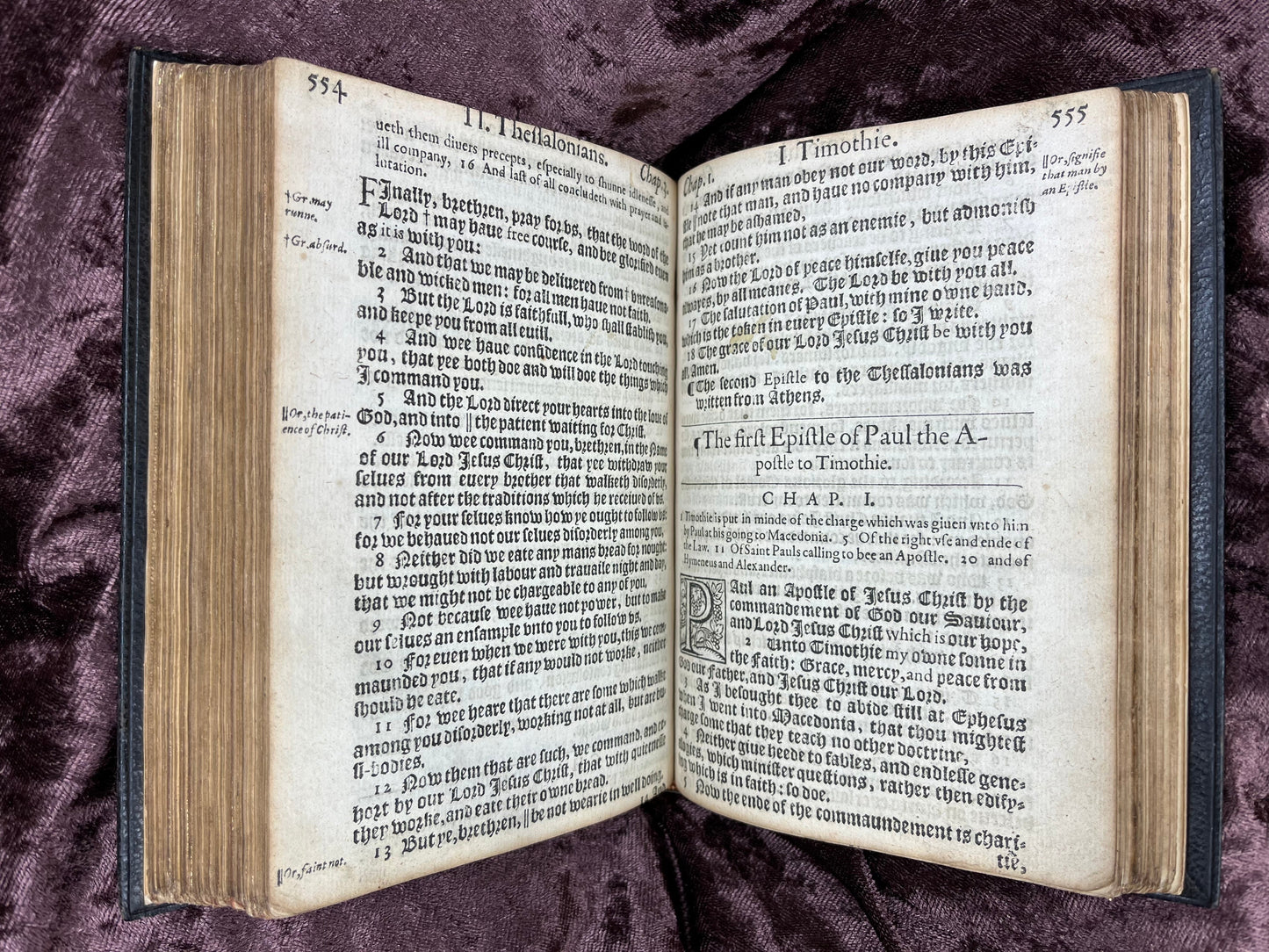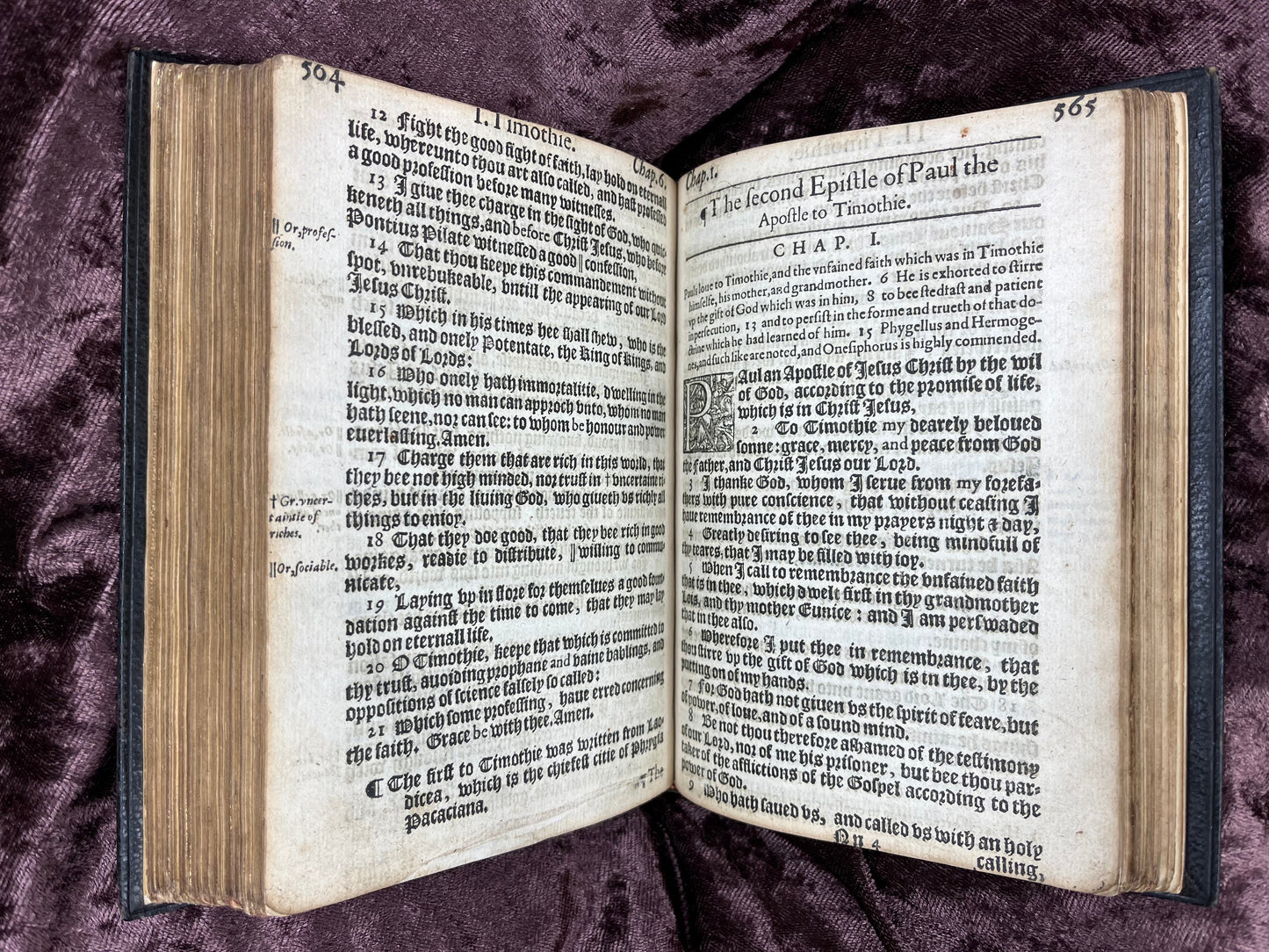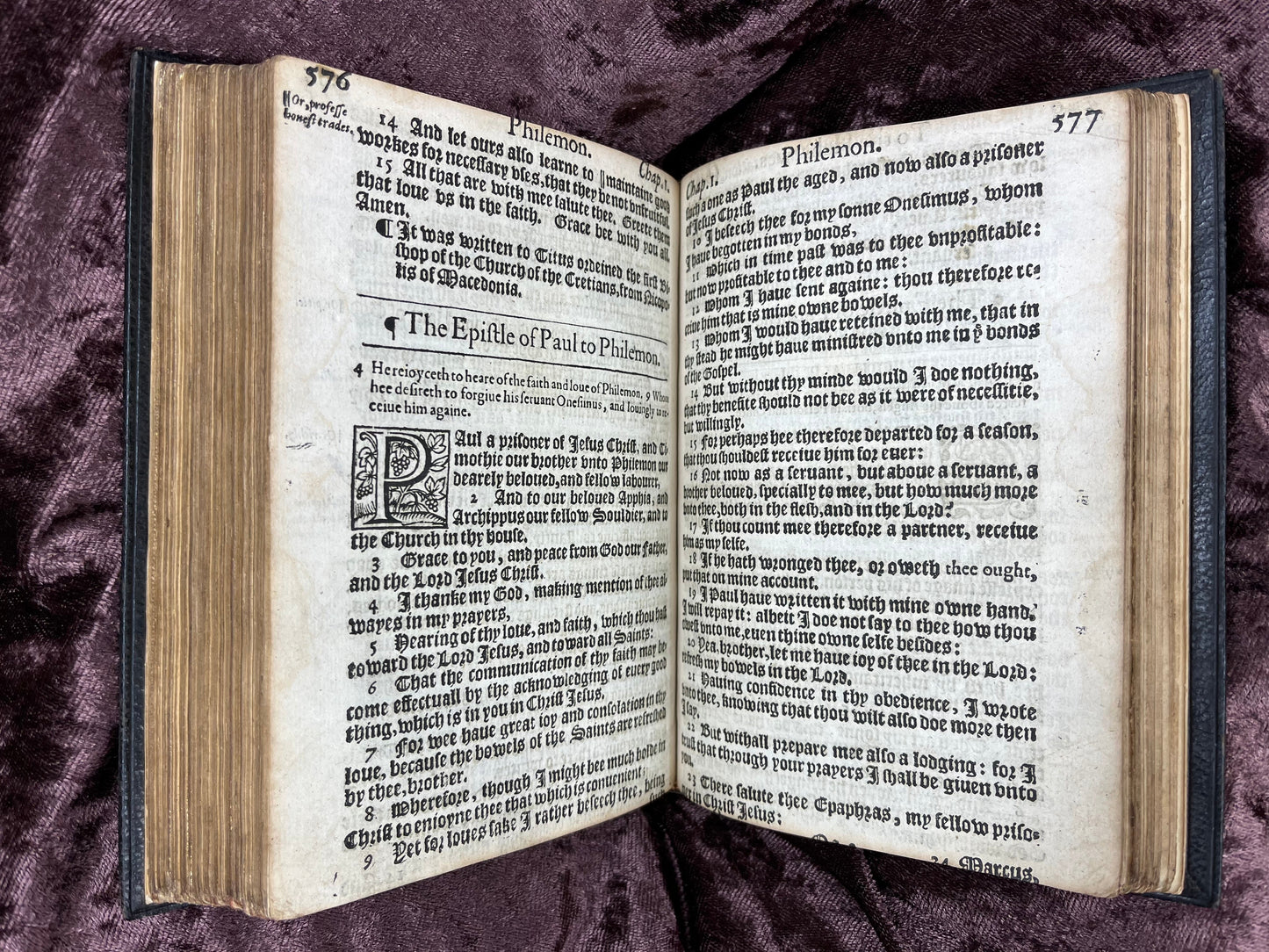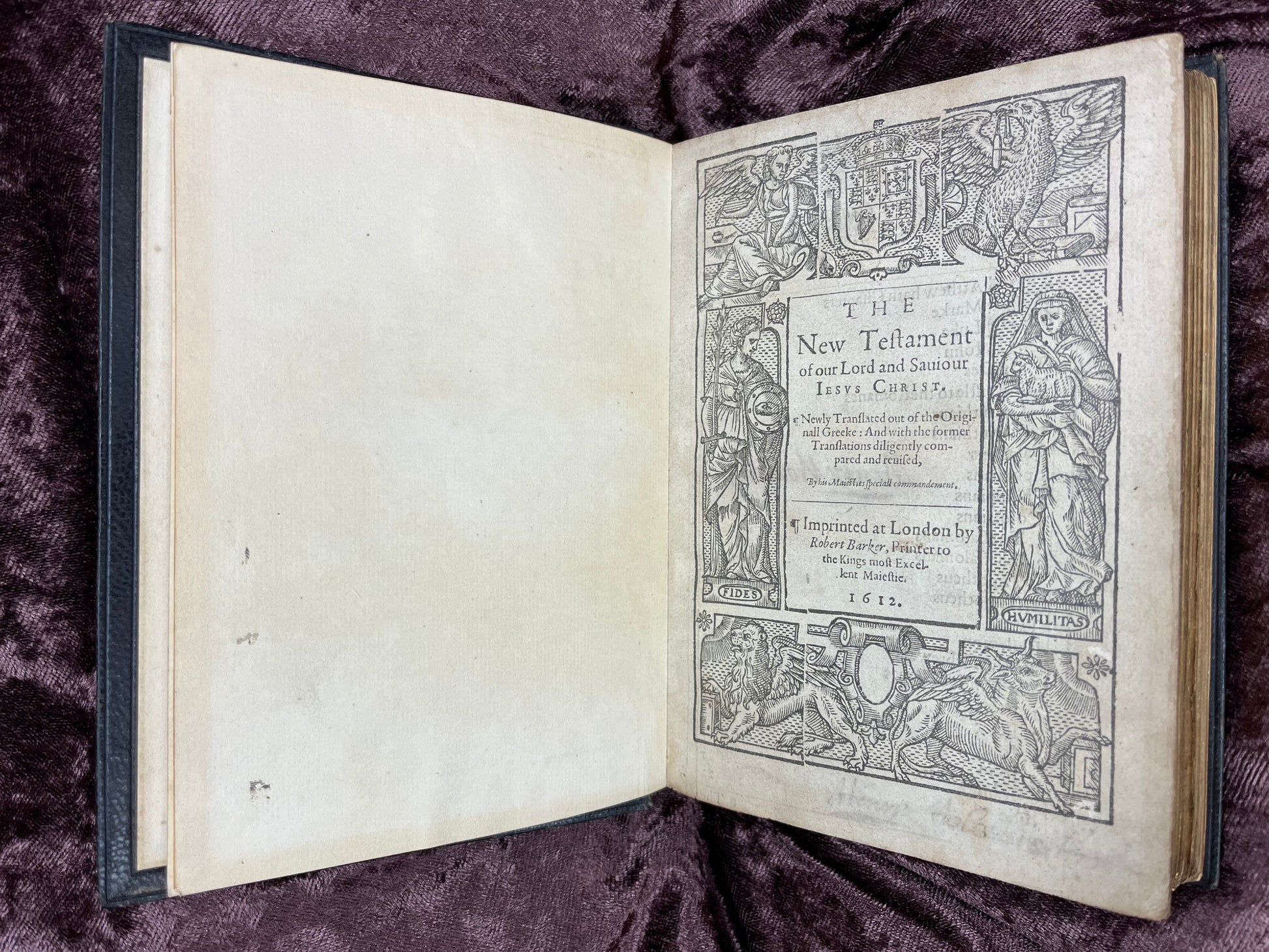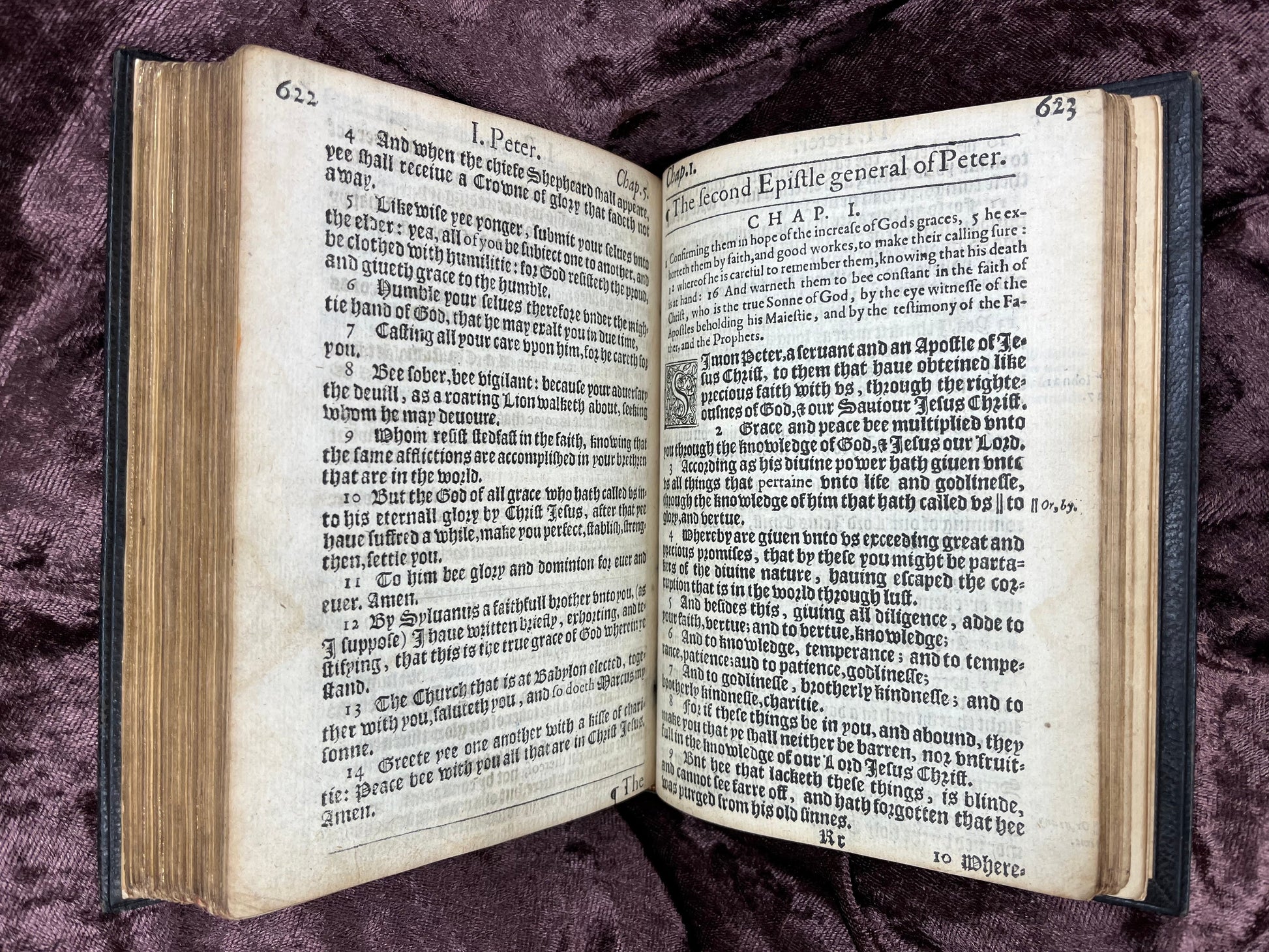1612 Quarto First Edition King James New Testament Printed By Robert Barker in London-Historically Owned By a Scottish Man James Blyth
1612 Quarto First Edition King James New Testament Printed By Robert Barker in London-Historically Owned By a Scottish Man James Blyth
Couldn't load pickup availability
Share
Importance: “The aim of those who produced King James's, or the Authorized, Version of the Bible was not to produce a new translation, but to make a good one better. It was a continuation, a refinement, a synthesis of all that had gone before. The greatest monument of English prose, no book has had greater influence on the English language or on the character of English-speaking people…” (Thomas, Alan G. Great Books and Book Collectors. Spring Books, 1988, p. 110.)
The early history of the historical stand-alone King James New Testaments starts with the printing of the first duodecimo format in 1611 (Herbert 310), which was the first single column printed, with only 3 copies in a private collection and 3 recorded institutional holdings. Finally, the printing of the first quarto format in 1612 (Herbert 318), which was the second single column printed. The quarto in particular is said to have been printed under the direction of Lancelot Andrews (1555-1626), at the proposal of King James I (1566-1625), within a few months after the famous 1611 HE folio King James Bible was printed (Herbert 309). The folio was printed in double column and restricted to the pulpits of the English churches by chain, along with its enormous format and weight, to prevent theft. Brake-Hellstern 2017 worldwide census indicates there are 198 copies of these folios, and auction records show a complete folio was last sold in 2016 for $396,500.
New Testaments focused on the Gospel of our Lord and Savior Jesus Christ, while at the same time eliminating the extra bulk of having an Old Testament. New Testaments like the 1557 Geneva in octavo format (Herbert 106) offered copious summaries and marginal references with commentaries, while the 1612 King James in quarto format was more barebones and stayed so with other editions. The quarto was the perfect format and weight for personal reading and study while traveling, with its large Black letter type ideal for the older eyes or people with visual impairments, and its layout in single column for a smoother reading experience of the Word of God, unlike what the dictionary style (the traditional double columns) offered. The copy presented here is far more rarer than the 1611 HE folio King James Bible, and is offered for way less than what a folio typically would sell for at retail price.
Binding: Quarto (7.4375” x 5.625” x 1.375”). 1 lb 10 oz. 19th c. blind and gilt tooled full fine black morocco leather binding with a.e.g. Spine with five raised bands, and six compartments with blind double-filleted borders. Second and third compartments with gilt-lettered title in capitals NEW TESTAMENT and LONDON 1612. Boards with blind double-filleted borders and turn-ins, with single-filleted edges. 19th c. plain endpapers. Rubbed (tail front joint cracked).
Provenance: Verso and recto of title page inscribed Henry Hole his book. Initially believed to have been owned by James Blyth (1839-1906), a Scottish electrical engineer who created the world’s first wind powered generator. But research indicates it was owned by another Scottish man named James Blyth during the 19th c. The Armorial bookplate to the front pastedown reads James Blyth with Persevere as his motto, the impaled arms indicate his wife’s maiden name was Scot or Scott not Taylor. The possession of this book by someone with the motto Persevere adds a unique and mysterious element, implying a strength of will and resilience that likely shaped their life and encounters.
Collation & Notes: NT has [2], 686 pp: A-Z8 ([A1r] T.P.), Aa-Uu8 (ends Uu8v). Total [344] ff. or (688 p.)
Complete, with an original title page. Horizontal chain lines. (19th c.) modern laid plain endpapers & fly-leaves. Darlow & Moule 245. Herbert 318. USTC 3004925, records 18 copies worldwide (U.K. 9, U.S. 6, & elsewhere 3). STC 2910. ESTC S90983. WorldCat records 2 copies. OCLC records 1 copy. Auction records show only 1 copy in 2010. The 1612 NT in quarto is a close reprint of the 1611 NT in folio, while correcting obvious mistakes that were made in the 1611 like Mark VII. 4 a marginal note. It has been observed that in every case, except Luke X. 36, the 1612 agrees with the 1611 folio edition over the 1613/1611 folio edition. John XIX. 19 misprinted tile not title.
“The first quarto New Testament came out this year (1612). It is a handsome book, printed in rather heavy black letter type on good paper. It has a man, a lion, an ox, and an eagle, at the corners of the title page, without pictures of the Evangelists, and “Fides” and “Hvmilitas” represented by full length female figures at the sides. “The names and order of all the Bookes of the New Testament, with the number of their Chapters” is on verso. There is no preliminary matter. One would suppose that the Testament of 1631 was a re-issue of this book, but close investigation shows that although both read together, and appear to be printed from the same type, there are minute differences in the setting up; for instance, the fourth line of S. Matt. i. 2 reads in the 1612, “Abraham begat Isaac, and”; but the 1631 has, “Abraham begat Isaac, and I-.” (Dore, J. R. Old Bibles: Or an Account of the Early Versions of the English Bible. Eyre and Spottiswoode, 1888.)
The 1612 New Testament title page is within the woodcut border. The woodcut border contains emblems of the Evangelists (man angel, winged lion, winged ox, and eagle) and figures of Fides and Humilitas, the Royal Coat of Arms for the Kingdom of England and Ireland featured in the top center are King James I and indicates that he authorized the Authorized Version. Interestingly, the woodcut title border resembles the certain editions of the Geneva and Bishops’ Bibles, and stand-alone New Testaments. On the recto is a title page in Roman and Italic type THE New Teftament of our Lord and Sauiour IESVS CHRIST. ¶ Newly Tranflated out of the Originall Greeke: And with the former Tranflations diligently compared and reuised, By his Maiesties fpeciall commandement. ¶ Imprinted at London by Robert Barker, Printer to the Kings moft Excellent Maieftie. 1612. On the verso of the New Testament title page includes the table of contents under a beautifully executed typographical ornament ¶ The names and order of all the Bookes of the New Testament, with the number of their Chapters. At the start of the Gospel of Saint Matthew is a large beautiful headpiece neatly sitting above the title of the book. The text is printed in Black letter type, in single column, verse form, verse numbers indented in matching type. Headlines, book titles with chapter numbers, summaries, and supplied words are in Roman type, except the headlines inner corner chapter numbers are in Italic type. There are 777 marginal Old Testament, Apocrypha, and New Testament Roman type references and Italic type notes. Single rules between chapters and double rules between each book. There are 28 historiated or floriated initials indented over 5-6 lines at the start of each book, and 260 Bold face type initials indented over 2 lines at the start of each chapter. Found within the text and margins are figures and marks like the reversed P pilcrows to mark paragraphs, † daggers for marginal notes offering a more literal translation in Italic type, || double vertical bars for marginal notes offering an alternative translation in Italic type, * asterisks or stars offering references to other agreeable passages within the Bible in Roman type. On the verso of the final leaf the text is separated by a single rule with the Colophon below it in Roman and Italic type ¶ IMPRINTED AT LONDON by Robert Barker, Printer to the Kings moft excellent Maieftie. ANNO DOM. 1612. ❡ Cvmprivilegio.
Condition: ff. (about 7.1875” x 5.125”). Minimally stained. Slightly browned. Few minor tears & old mendings. S6-Z3 minor inner worming. S6 (.1875”) rust hole costing 3 letters verso. Headlines, notes, texts lower line, & direction lines (varies) cut with slight loss.





